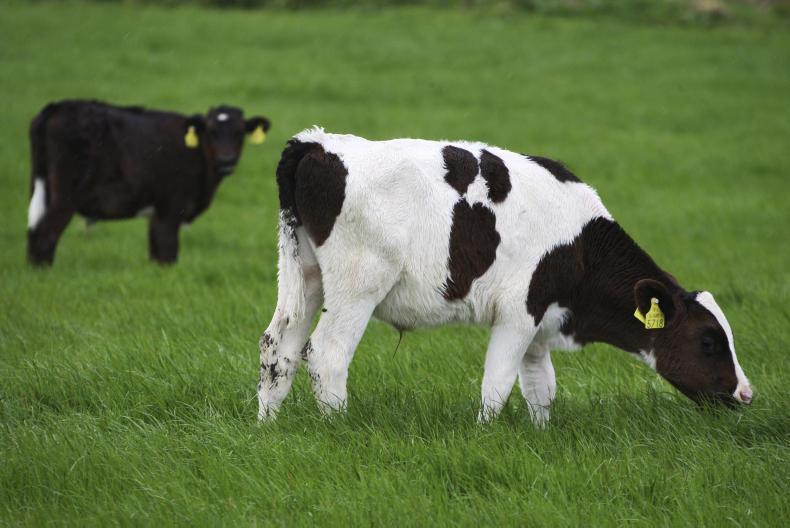Pearse Kelly, Teagasc head of drystock knowledge transfer, presented some data on dairy calf to beef systems at Tuesday night's meeting in Kilkenny.
Dairy beef calves have become an emotive issue in the last few weeks, with dairy farmers and beef farmers pitting against each other as to what sector the problem lies with.
Beef farmers argue that the extra calves will undermine the suckler industry and the genetics being used are at odds with profitable beef production.
The dairy industry has done an excellent job in making genetics work on the diary side, but their use of short gestation and easy calving bulls is now becoming an issue, with very low carcase weights being seen from these cattle.
The national dairy herd is heading for 1.6 million dairy cows and while some will be exported, a lot of these calves will end up on beef farms
This coupled with increasing crossbred genetics being used on the dairy herd means both sectors are currently polls apart in finding a resolution.
Pearse Kelly addressed the meeting and told farmers: "The national dairy herd is heading for 1.6 million dairy cows and while some will be exported, a lot of these calves will end up on beef farms.
"Don't think there will be a slaughter scheme, because there won't be, so we have to deal with them. We had an extra 275,000 dairy beef calves born on Irish dairy farms in 2018 compared to 2010 births."
Systems
Looking at systems, Kelly advised farmers to stay away from bull beef from the dairy herd under 16 months. Concentrate usage is too high.
Twenty-month bulls are risky too, while the 24-month and 28-month steers are the most profitable system you can run based on maximising the amount of grazed grass in the diet.
Kelly advised farmers to stay away from bull beef from the dairy herd under 16 months. Concentrate usage is too high
Kelly added that farmers have to take a look at calf price when it comes to making a profit and that beef farmers cannot afford to pay too much for calves this spring.
He put up figures based on Teagasc demonstration farms to advise on what farmers can afford to pay for calves while also achieving a €200 net profit margin per head.
Costs of production
Based on costs of production of €977 to bring a Friesian steer to 24 months, producing an O-3+ carcase at a base price of €3.80, that Freisian bull calf needs to be coming in at €-39.
In other words, you need to be paid €39 to take him off the dairy farmer.
The figure for an Angus/Hereford bull calf is in the region of €90 to €100. For a Jersey-cross calf at the same beef price, this figure is closer to €140.
Kelly finished by saying that there was massive variation in dairy beef genetics being used and that the roll-out of the new dairy beef index will hopefully improve the genetics being used on dairy farms.
"Beef farmers need to look for sires of calves when purchasing calves," he added.






 This is a subscriber-only article
This is a subscriber-only article










SHARING OPTIONS: